Rob Bignell's Blog, page 383
January 27, 2013
'7 Minutes a Day' series appears on 5 news sites
My
 new 7 Minutes a Day… writing guidebook series garnered some nice early attention from the press. The series was featured Thursday on several Patch news sites: Carlsbad, Encinitas, Oceanside and Palm Desert in California and Iowa City in Iowa. I used to live in Encinitas (Carlsbad and Oceanside are neighboring communities), Palm Springs (Palm Desert is a neighboring city) and Iowa City. All three books in the 7 Minutes a Day... series can be purchased online.
new 7 Minutes a Day… writing guidebook series garnered some nice early attention from the press. The series was featured Thursday on several Patch news sites: Carlsbad, Encinitas, Oceanside and Palm Desert in California and Iowa City in Iowa. I used to live in Encinitas (Carlsbad and Oceanside are neighboring communities), Palm Springs (Palm Desert is a neighboring city) and Iowa City. All three books in the 7 Minutes a Day... series can be purchased online.
Need an editor? Having your book, business document or academic paper proofread or edited before submitting it can prove invaluable. In an economic climate where you face heavy competition, your writing needs a second eye to give you the edge. I can provide that second eye.
Related articles
 Editor's 'Hikes: Games' now available on Kindle
Editor's 'Hikes: Games' now available on Kindle Editor's '7 Minutes a Day...' writing guides on sale
Editor's '7 Minutes a Day...' writing guides on sale
Reviewer gives editor's novel positive review
My  novel Windmill received a positive review Wednesday on Amazon.com. The novel tells the story of Carl Steinar and his sons, Peter and Lyle, who for 15 years have maintained a tenuous balance keeping together their family and farm…but when Abbie Blaire, the new reporter in town, comes to write a story about them, a monkey wrench is thrown into their perfect machine: She is the spitting image of the wife and mother the Steinar men lost years ago. Of the book, reviewer Lasher Lane wrote, “Mr. Bignell taps all the senses. His description of the landscape's harsh beauty is almost spiritual, as well as his depiction of the windmill’s watchful eye, its constant rotating force giving the Steinar men both consolation and purpose.” Lane is a fiction writer whose first novel is set to be published this spring. Windmill is available in paperback or on Kindle.
novel Windmill received a positive review Wednesday on Amazon.com. The novel tells the story of Carl Steinar and his sons, Peter and Lyle, who for 15 years have maintained a tenuous balance keeping together their family and farm…but when Abbie Blaire, the new reporter in town, comes to write a story about them, a monkey wrench is thrown into their perfect machine: She is the spitting image of the wife and mother the Steinar men lost years ago. Of the book, reviewer Lasher Lane wrote, “Mr. Bignell taps all the senses. His description of the landscape's harsh beauty is almost spiritual, as well as his depiction of the windmill’s watchful eye, its constant rotating force giving the Steinar men both consolation and purpose.” Lane is a fiction writer whose first novel is set to be published this spring. Windmill is available in paperback or on Kindle.
Need an editor? Having your book, business document or academic paper proofread or edited before submitting it can prove invaluable. In an economic climate where you face heavy competition, your writing needs a second eye to give you the edge. I can provide that second eye.
Related articles
 Get a 'look inside' author's debut novel 'Windmill'
Get a 'look inside' author's debut novel 'Windmill' Menomonie, Wis., newspaper features 'Windmill'
Menomonie, Wis., newspaper features 'Windmill' Volume One hosts 'Windmill' book reading
Volume One hosts 'Windmill' book reading Editor's books now at Menomonie, Wis., store
Editor's books now at Menomonie, Wis., store Bookhouse in Dinkytown hosts 'Windmill' reading
Bookhouse in Dinkytown hosts 'Windmill' reading
January 26, 2013
Editor’s marketing book garners positive reviews
My new 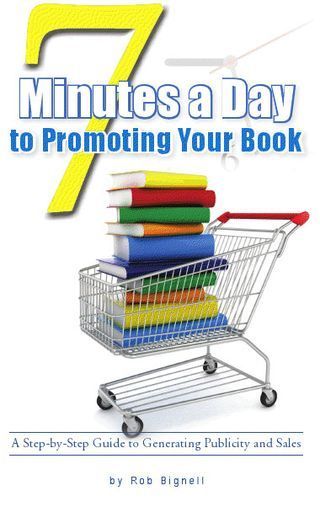 book 7 Minutes a Day to Promoting Your Book has received a number of positive reviews on Amazon.com. Among the comments:
book 7 Minutes a Day to Promoting Your Book has received a number of positive reviews on Amazon.com. Among the comments:
n “After completing my novel, I bought seven books on publication and promotion. Rob Bignell's 7 Minutes a Day to Promoting Your Book is the eighth and final one in my collection ...because I don’t think I’ll need another one. And it is the only one I intend to keep at my digital elbow…” - Byron Wade, published author (Jan. 24)
n “Being a busy professional in another field and having recently written my first novel in my spare time I found this step by step guide of most value to me....Rob gives you ahead of time the tools to gather and the steps to take to go about the process of promoting your book on a tight time schedule.” - Anthony Gaines, published author (Jan. 25)
n “Hiring a marketing firm to promote you and your book can be very costly but with the assistance of 7 Minutes a Day to Promoting Your Book there is much you can do on your own that will improve exposure and ultimately increase your sales.” - Steven S. Sharp, published author (Jan. 24)
n “Rob Bignell’s easy step-by-step approach to promoting your book will empower you to obtain fantastic results. As you read it, I am certain you'll want to employ many of the promoting strategies outlined in this resourceful book.” – Nestor Lima, published author (Jan. 23)
n “It is highly informative and there are many ways that he has suggested to promote that I would have never thought of without reading this book.” - JP Allison (Jan. 23)
7 Minutes a Day to Promoting Your Book helps writers develop a strategy that will get articles about their self-published book in newspapers, magazines, on radio and television programs, posted on blogs and linked to on websites, while landing them book signings and readings, all at virtually no cost. It is available as an ebook on Kindle.
Need an editor? Having your book, business document or academic paper proofread or edited before submitting it can prove invaluable. In an economic climate where you face heavy competition, your writing needs a second eye to give you the edge. I can provide that second eye.
Related articles
 Editor's '7 Minutes a Day...' writing guides on sale
Editor's '7 Minutes a Day...' writing guides on sale Market your book with a free unpublished story
Market your book with a free unpublished story Get free ebook copy of '7 Minutes a Day' guide!
Get free ebook copy of '7 Minutes a Day' guide! Design a back cover that sells your book
Design a back cover that sells your book Promote book with Goodreads author's page
Promote book with Goodreads author's page
January 25, 2013
Get free ebook copy of '7 Minutes a Day' guide!
This 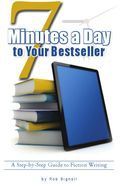 weekend,
weekend,
e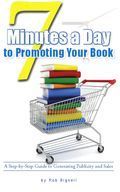 njoy free copies of two of my new 7 Minutes a Day… writing guide series!
njoy free copies of two of my new 7 Minutes a Day… writing guide series!
All day Saturday and Sunday, you can download either (or both!):
n 7 Minutes a Day to Your Bestseller – Novel writers receive expert advice on topics like motivating themselves to write, starting their story with exciting opening lines, creating intriguing characters, mastering the craft of writing to elevate their style, and pitching the story to potential publishers.
n 7 Minutes a Day to Promoting Your Book – Writers develop a strategy that will get articles about their self-published book in newspapers, magazines, on radio and television programs, posted on blogs and linked to on websites, while landing book signings and readings, all at virtually no cost.
The free copies are only available as Volume One hosts 'Windmill' book reading
Market your book by spinning it for a holiday
When promoting your book, you always should have a website, send out press releases to bloggers and mainstream media, and arrange book readings/signings to ensure the title is properly promoted. But those aren’t the only things you can do. In fact, they may not be enough. One marketing effort you might want to consider is spinning it for an upcoming holiday.
promoting your book, you always should have a website, send out press releases to bloggers and mainstream media, and arrange book readings/signings to ensure the title is properly promoted. But those aren’t the only things you can do. In fact, they may not be enough. One marketing effort you might want to consider is spinning it for an upcoming holiday.
Just because your book was released months ago doesn’t mean you can’t promote it again in the media. For example, if your book is about relationships, why not write a new press release for Valentine’s Day? If your book is about outdoors activities with children, why not stress the importance of them between dads and their kids for Father’s Day? Even New Year’s Day offers an opportunity; if your book is about dieting, why not market is as the “The Must-Have Guide to Staying Thin in 2014”? Target mainstream media and bloggers that ignored your first press release.
Need an editor? Having your book, business document or academic paper proofread or edited before submitting it can prove invaluable. In an economic climate where you face heavy competition, your writing needs a second eye to give you the edge. I can provide that second eye.
Related articles
 Why you want reviews written about your book
Why you want reviews written about your book Editor's books now on sale at Minneapolis store
Editor's books now on sale at Minneapolis store Write a winning blurb for your book's back cover
Write a winning blurb for your book's back cover
January 24, 2013
Editor's '7 Minutes a Day...' writing guides on sale
The first three titles in my new writing guidebook series have been published. The 7 Minutes a Day to… series provides a step-by-step guide to everything a writer needs to know to get their book out of their head and into readers’ hands.
three titles in my new writing guidebook series have been published. The 7 Minutes a Day to… series provides a step-by-step guide to everything a writer needs to know to get their book out of their head and into readers’ hands.
Books in the 7 Minutes a Day… series include:
n 7 Minutes a Day to Your Bestseller – Novel writers receive expert advice on topics like motivating themselves to write, starting their story with exciting opening lines, creating intriguing characters, mastering the craft of writing to elevate their style, and pitching the story to potential publishers.
n 7 Minutes a Day to a Self-Published Book – Whether writing a novel or nonfiction, whether planning to print a paperback or an ebook, this book guides authors through the self-publishing process, from the title page to the index, from designing a cover to formatting the text.
n 7 Minutes a Day to Market Your Book – Writers develop a strategy that will get articles about their self-published book in newspapers, magazines, on radio and television programs, posted on blogs and linked to on websites, while landing book signings and readings, all at virtually no cost.
The titles are available as Kindle ebooks, with the paperback versions due out in another week or so.
Need an editor? Having your book, business document or academic paper proofread or edited before submitting it can prove invaluable. In an economic climate where you face heavy competition, your writing needs a second eye to give you the edge. I can provide that second eye.
Related articles
 Basic guidelines for self-publishing ebooks
Basic guidelines for self-publishing ebooks Editor's 'Hikes: Games' now available on Kindle
Editor's 'Hikes: Games' now available on Kindle Covers for editor's new book series arrive
Covers for editor's new book series arrive
January 23, 2013
Covers for editor’s new book series arrive
Got the covers back this evening on my next three books in my new “7 Minutes a Day…” writing guide series. Douglas R. Fullmer, my business magazine colleague in San Diego, created the covers. The three books should be on sale in about 1-2 weeks. You can read more about the series at its website.
covers back this evening on my next three books in my new “7 Minutes a Day…” writing guide series. Douglas R. Fullmer, my business magazine colleague in San Diego, created the covers. The three books should be on sale in about 1-2 weeks. You can read more about the series at its website.
Need an editor? Having your book, business document or academic paper proofread or edited before submitting it can prove invaluable. In an economic climate where you face heavy competition, your writing needs a second eye to give you the edge. I can provide that second eye.
Related articles
 Editor's books now at Menomonie, Wis., store
Editor's books now at Menomonie, Wis., store Editor's books now on sale at Minneapolis store
Editor's books now on sale at Minneapolis store Bookhouse in Dinkytown hosts 'Windmill' reading
Bookhouse in Dinkytown hosts 'Windmill' reading Volume One hosts 'Windmill' book reading
Volume One hosts 'Windmill' book reading Five great quotations about novel writing
Five great quotations about novel writing
January 22, 2013
How to get rid of info dumps in your story
Sometimes you do need to include the information provided in the info dump in your story. The best way to accomplish that is to incorporate it into your tale:
n Rewrite so that it’s part of the description or so it’s implied in the dialogue – This is the best way. You are now showing the information rather than telling it.
n Have the characters read or see a news report – If the information can’t be rewritten, use this ploy. Only give the information necessary to the plot, however, not the entire news article or report.
n Provide journal entries or captain’s logs – In 10 seconds, Captain Kirk gets you caught up on the plot. Usually some conflict needs to be noted or implied in the log, however, so that there’s dramatic tension.
Need an editor? Having your book, business document or academic paper proofread or edited before submitting it can prove invaluable. In an economic climate where you face heavy competition, your writing needs a second eye to give you the edge. I can provide that second eye.
Related articles
 Avoid exposition (Show, don't tell!)
Avoid exposition (Show, don't tell!) Improve writing's texture by avoiding repetition
Improve writing's texture by avoiding repetition
January 21, 2013
Incorporate man vs. man conflict into your story
When 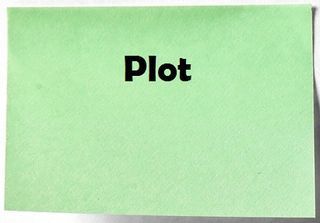 developing your story, you’ll want your characters to face a number of challenges or conflicts. One of the most basic of them is man vs. man. In this conflict, the main character finds his goals jeopardized by another individual: a stormtrooper shooting at them, a Klingon arguing with them in a space station cantina; or a lowly human turning our astronauts over to the sadistic ape overlords.
developing your story, you’ll want your characters to face a number of challenges or conflicts. One of the most basic of them is man vs. man. In this conflict, the main character finds his goals jeopardized by another individual: a stormtrooper shooting at them, a Klingon arguing with them in a space station cantina; or a lowly human turning our astronauts over to the sadistic ape overlords.
At its basest, man vs. man conflict is just two people taking on one another, with our hero usually winning. At its best, this conflict can symbolically test competing ideas and ethical solutions. A character represents one approach to a problem while the other represents an alternative path. All too often, these representations are reduced to simplistic views of good and evil. But by showing each characters’ motivations and needs, the story’s theme gains depth while the dramatic tension soars.
A good example of man vs. man conflict is “Star Trek II: The Wrath of Khan.” The story clearly revolves around two people: Khan and Admiral Kirk. The motivations of each are given: Khan wants revenge upon Kirk for marooning him on a planet that then underwent an ecological disaster and that killed his wife. Kirk feels a responsibility to protect the civilized world from Kahn, a disposed dictator and product of genetic engineering who he had defeated several years before. They play an extensive game of cat and mouse with one another in an effort to win. In the end, Kirk wins because his motivations are not based on revenge but doing what his right by others.
Need an editor? Having your book, business document or academic paper proofread or edited before submitting it can prove invaluable. In an economic climate where you face heavy competition, your writing needs a second eye to give you the edge. I can provide that second eye.
Related articles
 Conflict: The heart of every story
Conflict: The heart of every story Avoid exposition (Show, don't tell!)
Avoid exposition (Show, don't tell!)
January 19, 2013
Five great quotations about writing style
“A 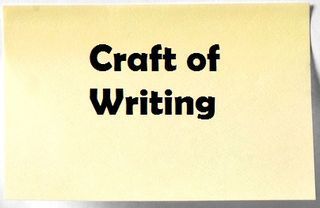 scrupulous writer, in every sentence that he writes, will ask himself at least four questions, thus: 1. What am I trying to say? 2. What words will express it? 3. What image or idiom will make it clearer? 4. Is this image fresh enough to have an effect?” – George Orwell
scrupulous writer, in every sentence that he writes, will ask himself at least four questions, thus: 1. What am I trying to say? 2. What words will express it? 3. What image or idiom will make it clearer? 4. Is this image fresh enough to have an effect?” – George Orwell
“Say all you have to say in the fewest possible words, or your reader will be sure to skip them; and in the plainest possible words or he will certainly misunderstand them.” – John Ruskin
“It’s not about the writing. It's about the feelings behind the words.” – Takayuki Ikkaku, Arisa Hosaka and Toshihiro Kawabata, “Animal Crossing: Wild World”
“Do not put statements in the negative form. And don’t start sentences with a conjunction. If you reread your work, you will find on rereading that a great deal of repetition can be avoided by rereading and editing. Never use a long word when a diminutive one will do. Unqualified superlatives are the worst of all. De-accession euphemisms. If any word is improper at the end of a sentence, a linking verb is. Avoid trendy locutions that sound flaky. Last, but not least, avoid cliches like the plague.” – William Safire, “Great Rules of Writing”
“Be obscure clearly.” – E.B. White
Need an editor? Having your book, business document or academic paper proofread or edited before submitting it can prove invaluable. In an economic climate where you face heavy competition, your writing needs a second eye to give you the edge. I can provide that second eye.
Related articles
 Improve writing's texture by avoiding repetition
Improve writing's texture by avoiding repetition



